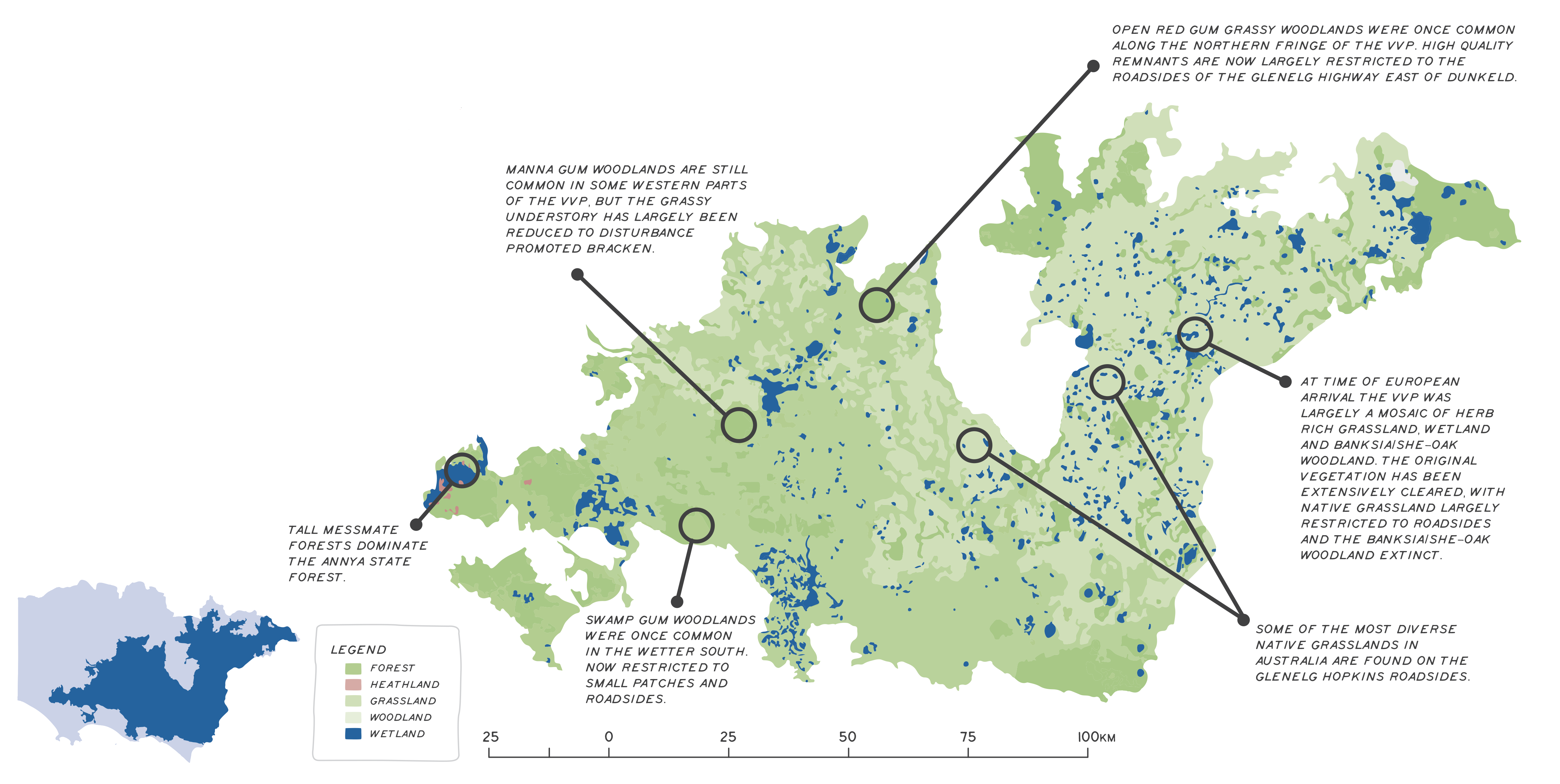Victorian Volcanic Plain
The Victorian Volcanic Plain (VVP) is the Glenelg Hopkins’ largest bioregion, covering 46% of the region. The VVP is a geological landform of fertile loam to clay soils owing to recent volcanic activity. Numerous volcanic cones can be seen rising to 150 m above the plains. It is the most species-rich Glenelg Hopkins bioregion, despite substantial land clearing, providing habitat for 1,280 native species (67% of Glenelg Hopkins biodiversity). Biodiversity is largely restricted to small but high-quality patches of native vegetation on roadsides, farms and a small number of reserves.
Roadside native grasslands
Seasonal herbaceous wetland during the dry phase. These wetlands were once the common wetland of the VVP, but are now critically endangered.
The golden sun moth is a threatened species found within the Natural Temperate
Grassland of the Victorian Volcanic Plain
Isolated sweet bursaria on a stony rise. These areas are likely to have been a banksia/she-oak woodland prioir to European arrival.



